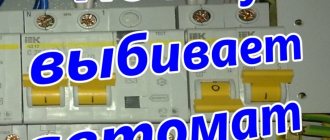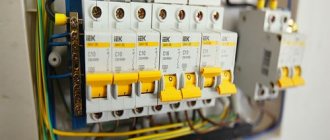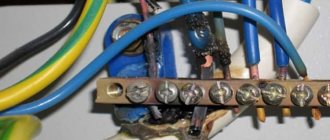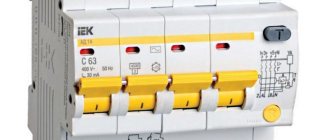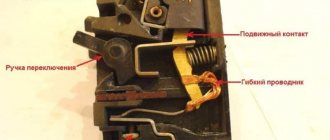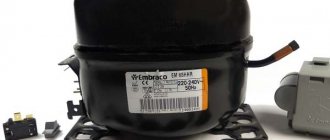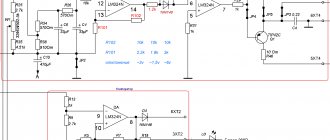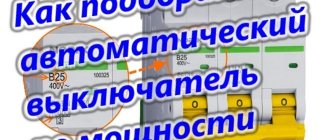Prerequisites for breakdowns
A significant number of manufacturers supply cheap products of low quality to the markets. An early breakdown of a water heater in this group does not come as a surprise, since even the warranty obligations for the products are minimal. However, even high-quality products, distinguished by their quality and reliability, may end up being repaired soon after purchase due to a number of factors, which are not at all difficult to avoid.
The main causes of water heater malfunction are hidden in our everyday life. Hard water and unstable power supply have a detrimental effect on equipment. Our water contains various salts in large quantities. It is they that lead to the formation of scale inside devices and operating circuits. Installing flow filters at the inlet of the heaters will help to significantly reduce the salt content.
Nuances to consider
First of all, it must be said that the RCD is a rather complex electronic device. To repair it yourself you need to be a good electronics engineer. But the best thing is to replace the RCD with a new one. In water heaters it changes along with the supply wire.
It is recommended to check the performance of the RCD monthly. The test can be performed using a special button, which is located directly on the boiler body itself. By clicking on it, the process of creating an artificial electric current leak occurs.
If the automation works, it means it is functioning normally, but if not, then you should replace the device, but before that, check if there are any problems with the water heating equipment.
Based on the results, it will be possible to understand why the RCD on the water heater turns off.
The water heater switches off
In the supply networks of most regions, voltage and frequency can vary significantly in a short period of time. Connecting network filters or uninterruptible power supplies will solve the problem.
It is important to install and connect the device correctly. Many breakdowns occur precisely due to errors at this stage. Even ignoring conventional grounding can not only lead to electrical shock, but will also contribute to the accelerated destruction of the magnesium anode and severe corrosion of all elements inside the tank. The optimal heating temperature is set to 60-70 0C.
Typical problems and their solutions
Devices of the TERMEX brand are highly respected by consumers. It is impossible to say that they are completely identical to other brands, but the construction and operating principle of the units are very similar. The designs of flow-through and storage heaters are also identical, the former differ only in a more powerful heating element, the latter have a large tank. Therefore, having analyzed the main reasons for the breakdown of the Termex water heater , it will be much easier to repair any other model yourself.
The most problematic part of a water heating device is its internal capacity. It is made from stainless steel or coated with titanium enamel. Stainless steel lasts 10 years or more, enamel deteriorates twice as long. A tank leak is often fatal to the continued use of the heater. In most cases, the causes of water heater malfunction and leakage lie in the corrosion of the bulb. Manufacturers protect it by spraying various compounds and installing a magnesium anode, but this rarely saves it. Sometimes it is possible to weld the container with argon, otherwise it is impossible to repair the unit. Therefore, timely replacement of the magnesium anode and annual descaling of the tank are so important.
There are various malfunctions of water heaters , which are identified and eliminated independently:
- When you turn on the device, the RCD knocks out . The heating element may be incorrectly connected (check), the equipment is incorrectly connected to the electrical network (check), or the machine may fail (replace).
- The water heater does not heat water. The thermostat (check, replace) or heating element (check, replace) could be faulty or poorly connected. The device is poorly connected to the network (check).
- Leaking from under the flange. The gasket is worn out or damaged (remove and look for a similar one - better not China), the flange itself is rusty and leaking (replace).
- The temperature is not regulated, the heater overheats (boils) and turns off . It indicates a failure of the thermostat (check the thermal paste under it and the device itself, replace) or incorrect connection of the device (check).
- The device does not heat at all or heats the water too slowly . This happens due to a breakdown water heater thermostat (replace), excessive scale build-up or burnt-out heating element (clean, replace), failure of the control and monitoring unit (call a technician, replace).
- The body of the water heater is electrocuted . The heating element is covered with scale, cracked and water is in contact with the coil (replace) or the control and monitoring unit has failed (replace). The device is not grounded (ground).
- The unit does not turn on . The thermostat does not work (replace), the heating element is shorted or burnt out (replace), the control board is faulty (replace), there is no power supply from the network (check).
- The device hisses, takes a long time to heat up, and makes strange sounds. The phenomenon is observed when installing too narrow pipes (replace with wider ones). If the heater is used for a long time without preventive measures (clean).
There are other faults with electric water heaters that are specific to certain models. Methods for eliminating any of them can be found on the Internet upon request.
The main reasons for the breakdown of boilers are the same as those that damage water heaters (scale), although in these devices the fittings of the devices play an important role: pipes, connections, taps, taps, valves, pumps. Here, the internal areas of the tanks are also susceptible to the formation of deposits, but the main part of them accumulates on the inner and outer surfaces of the coils (depending on what acts as the coolant). A fairly common boiler breakdown is the failure of its conductive tubes. They can only be welded with argon, but to carry out such repairs you will have to remove the coil from the tank and subsequently put it back. Repairing on your own is practically impossible here and calling for service is inevitable.
31.12.2015
The machine knocks out, the ouzo goes off
There are two types of protection in the apartment - a safety circuit breaker (plugs) protects only against short-circuit current, and an RCD (residual circuit breaker) a residual current device.
Protects against electric shock and fire when the insulation of household electrical appliances is broken. Thus, there are two different reasons why the machine knocks out; reasons why the machine knocks out.
Network congestion
If a 25A circuit breaker is installed in the panel, and a load exceeding this value is simultaneously connected to the network, then it is quite logical to assume that after some time the device will turn off. In this way, the wiring is protected from overheating and subsequent ignition.
One of the reasons for the machine to periodically turn off is too many connected electrical appliances
How to determine that the device turned off due to overload? Most likely, the device will connect again and disconnect again after a short period of time. The process will be repeated until any electrical appliance is unplugged from the outlet.
Tip No. 1: In this case, it is extremely undesirable to replace the machine with another model with a higher denomination. The best solution is to arrange separate wiring and power a group of sockets from it to an additional circuit breaker.
How to choose?
RCDs are universal mechanisms that can be used to turn on and off various household appliances. You can select such a mechanism for an electric water heater based on some simple rules, which will be discussed below:
- The power of the RCD is selected based on the similar indicator of the household appliance that is planned to be used. For boilers with a power of no more than 2.3 kW, experts recommend installing mechanisms rated at 10 A. If this figure varies in the range of 5.5-8 kW, you should buy an RCD for 32-40 A. That is why it is so important to pay attention not only on the switch itself, but also on the connected device.
- Leakage current. This characteristic is calculated based on operating current indicators. Often 0.4 mA is taken into account at 1 A. If the RCD is installed at a remote distance, it is advisable to add another 10 µA per meter of cable. This value can be easily minimized if you install the device directly in front of the water heater itself.
- Installation method. There are several options for protective devices on the market. The most common are RCDs that can be mounted on a DIN rail. An alternative option is separate units that allow you to plug them directly into an outlet.
It should be noted that many modern manufacturers of water heaters integrate such devices into their equipment.
The elements may be located in an inconspicuous place - under the housing or inside the network cable, so it is advisable to clarify this feature before purchasing a boiler. The advantage of such a system is that the manufacturer accurately calculates all the characteristics of the RCD for a heater of a certain power.
RCDs are not complicated, but they can be classified according to several criteria. Devices are divided into the following types (depending on the type of current leakage):
- Class A. Used for alternating or pulsating electrical currents.
- Class AC. These devices are designed for AC operation only. They are one of the cheapest and simplest models and are used in many apartments.
- Class B. Universal devices for industrial use. They can be used not only for alternating current, but also for direct or rectified current.
- Sometimes manufacturers add the letter S , which indicates that the device turns off only after a certain period of time. In everyday life, there is no need to use such systems together with water heaters, so they are very rare here.
- Class G. These RCDs are similar to S, but their dwell time is much shorter.
Depending on the method of breaking the circuit, RCDs can be divided into the following groups:
- Electronic. They are relatively inexpensive devices that are used in simple systems. Experts do not recommend installing them, as they are powered from the electrical network. If the user accidentally damages the neutral wire, the device will simply fail. Another disadvantage is the relatively long response period.
- Electromechanical. Switches of this type are not powered from external electrical sources, so they are more reliable and of higher quality. The only drawback of such devices can be considered only their inflated price.
Features of repair and replacement of RCDs
If the machine knocks out when the boiler is turned on, there is a high probability of breakdown. You can repair a faulty RCD if you have experience, tools and parts. The optimal solution for owners is to replace the device. To determine its likelihood, a monthly check is necessary. To do this, use the button to create an artificial leak.
Nuances of repair work
Before repairs, it is necessary to disconnect the network
The difficulty of repair lies in the lack of a diagram. Therefore, when troubleshooting problems yourself, you should be guided by the following algorithm:
- Removing sealant and screws on the body.
- Removing the fasteners with a slotted screwdriver and disassembling the device.
- Making a circuit by drawing from a printed circuit board.
- Device testing. The leakage current is simulated by applying voltage from the resistor to the amplifier. A leak is indicated by the activation of the triac and the closure of the circuit.
- Troubleshooting and assembling the device.
To protect against leaks, overloads, and short circuits, the water heater must be connected through an RCD or automatic circuit breaker.
Knocking out of the boiler safety shutdown device occurs for several reasons. You can detect the breakdown yourself. Since the RCD is not equipped with a circuit and is a complex device, it is easier to replace it than to repair it.
Basic Concepts
Electric water heaters are devices in which current energy is converted into heat and then transferred to water. Conventionally, such devices can be divided into 2 groups:
- Flow-through. The water is heated in them by passing through special systems with warm plates or pipes that instantly release heat to it. Flow-type heaters are characterized by high power.
- Cumulative. These include a conventional boiler with a heating element, which consistently heats the water inside the tank.
An RCD for a water heater is a special device designed to protect against current leakage.
The principle of its operation can be described as follows:
- The device is installed directly in front of the heater itself. All the current passes through it, which powers the mechanism.
- If there is a current leak inside the heater, then the RCD catches it, after which the entire system is switched off. Its operation is ensured using special sensors and switches.
It should be noted that the RCD, in its operating principle, resembles an automatic machine, but technically it is not one. It picks up even small current fluctuations that automatic machines are unable to analyze.
Today, such mechanisms do not always provide an optimal level of safety, so the water heater must also be additionally equipped with grounding. An RCD should not be confused with a difavtomat, as these are two different designs. The first mechanism is capable of catching only current leaks, and the second is more universal: the difavtomat also reacts to short circuits, overloads and other similar problems, while “knocking out” the electricity.
Reasons for triggering
Technically, protective systems do not need to be used. However, for water heaters they are mandatory attributes. This is due to the fact that the structures are made of metal, and the water itself conducts current well. The use of water heaters without protective systems is unacceptable, as it can become a threat to human life.
The RCD is turned off for several main reasons:
- Damage to the insulation of the heating element. It is this that protects the entire system from the passage of current. Any user can safely wash their hands without fear of electrocution. However, in old or low-quality models of water heaters, this element may be damaged. Such phenomena can only be checked using special instruments.
- Leakage current. Very often the RCD is knocked out if the cable inside the boiler or the power cord itself is damaged. You need to pay attention to the fact that this can happen in almost any wire. Very often, the cable itself is damaged from the inside, after which current is supplied to the metal housing. To find the cause, very often it is necessary to disassemble the heater and analyze the situation.
- The shutdown mechanism does not work. This very often happens with cheap products from unknown companies. They may simply not turn on after several operations.
- Incorrect location of the RCD. If the device is connected in the wrong place, then it will analyze the wrong currents. If the heater breaks down, the system will not protect a person from current leakage.
